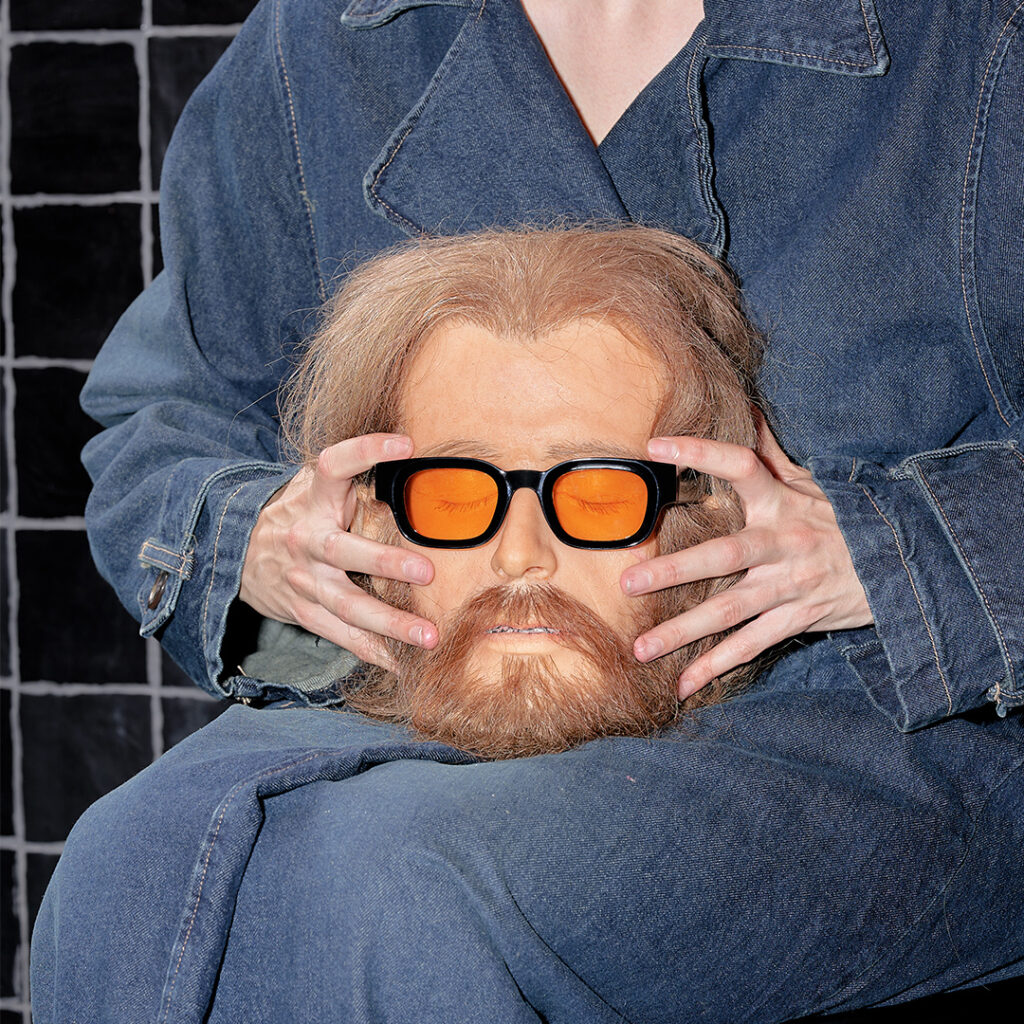So you’re making your way downtown, walking fast, faces pass and you’re homebound. Staring blankly ahead, just making your way through the crowd and you wonder… Could I start a fashion brand?
We’re here to tell you yes, yes you can. It’s one of those things that we’ve all thought about at one time or another in our lives. Like writing a book, embarking on an adventure, or cooking beef wellington (or one of those cakes that look like something else for those with a sweet tooth). Problem is, most of us won’t really have a scope of what founding a fashion brand entails. While some think it’s as easy as painting a t-shirt and putting it on Etsy, others conjure up images of far-away production lines, ostentatious fashion shows, and haute couture; immediately deciding it’s a complete and utter impossibility. But truth be told, it’s neither.
The issue with many creative endeavours is that oftentimes people think it’s just about creativity and creating in itself. They take that as the most important element. And don’t get us wrong, without that, there is no product to work with that’s for sure. But many efforts and potentially great ventures fail before they even take off because they lack a capable, solid business plan that can truly take your creation, and turn it into an economically fruitful business. And a fashion brand is no different. As daunting as following a business plan can be, it’s the difference between sinking and swimming in this industry.
But how does one go about creating a business plan to launch a fashion brand?
Find out what product is missing in the fashion industry
This step is really the same when it comes to launching any sort of product, not just a new fashion brand. Before even beginning your design process, you need to do proper, in-depth market research. What needs aren’t being covered by current big fashion labels? Does your niche cover this gap in the market? Think about Pangaia and the extraordinary niche they filled; within the sustainable clothing industry, they sedimented themselves even deeper into the niche and actually became one of the first brands to successfully turn air pollution into clothes. Or take Suicoke as an example, they took one of the items considered least fashionable and on the opposite spectrum of high fashion, sandals, and elevated them into the runway-worthy, high fashion footwear they are today.

Draw up a business strategy for your product
Once you have the what, you’re gonna need the how. In order to define this ‘how’, you’re going to need a business plan, and in order to craft the business strategy, you’re going to have to decide on a few things such as.
What is your target customer?
It is of the utmost importance that you not only figure out what gap in the market you are trying to fill, but who you’re trying to fill it for. Who is your target audience? This will inform many of the actions in your business plan. Is your product intended for the wide masses? For a particularly niche subculture? How about demographic? It’s not the same to cater to the youth that although significantly more into style and trends, has a notably lesser purchasing power than to try and capture the attention of older demographics. Middle aged-customers would be able to invest in more expensive products, but the storyline and brand identity necessary to get such an audience on the hook will most certainly be different.
What is your main goal?
What do you wish to achieve with your fashion brand? Do you want to sell to department stores? Do you want a luxury brand with stores in the most exclusive locations of New York, London, and Paris? Do you want to be the brand behind the latest graphic T that every TikTok videogame influencer is sporting? This decision will largely inform the direction of your business plan.
Plan in hand, pick up your tools and let the design of original ideas begin!
Now that you’re a little more knowledgeable regarding what to make, for whom, and how, you can get to – presumably – your favourite part: actually designing the product. While it is of no use to take on ridiculous amounts of pressure regarding your beginning since, think of this as your introduction to society. It might be your chance to be the diamond of the season, but that’s not to say that you can’t find your shine later on.
Keep in mind that as your initial design, it will have to be a tangible product whose production costs you can afford. We would all love to make our design dreams come true, but we need to work within our limits as far as resources go. Better to have something attainable and done, than perfect and imaginary.

Now you have your design, find someone who can make it : The manufacturing process
This is the part where you think about how to actually make the clothes. Will you source the fabric materials yourself? Do you plan on hand-crafting every element of every piece or are you looking to outsource some, if not all, the production?
Depending on your audience and your goal you will most probably settle for one of the many options. Luxury products will look towards Italy and Spain, as well as local manufacturers. Many brands go for production companies in China, Bangladesh, Turkey, Sri Lanka or Vietnam as they tend to be on the cheaper side. Sustainable clothing will look to partner up with local producers or hand-craft every item out of upcycled or recycled materials. The list is endless really.
Ideally, you want to collaborate with a manufacturing facility whose values align with yours. Collaborators with whom the workflow is simple, and communication is efficient and transparent. It is common to visit potential partners before actually deciding on a manufacturer. You will also have to take into account what you can afford to take on production costs-wise and what you can’t. This might also influence your price point since it is not only affected by your audience and your product, but by the cost of making it.
Get started on the marketing game. Impactful, directed, and effective is what you’re looking for
You have your market research, your business plan, your goals, your product, your clothing manufacturers, and your manufacturing costs. These are all the ingredients you need to plan a powerful marketing strategy. Bring your clothing company out of the shadows and into the (correct) spotlight.
Brand identity and all that jazz: name, logo, website
The next step is creating your brand’s public profile, and establishing your brand identity.

This is the part where you get to choose a name, a logo, a story to tell. Your online and offline presence is determined here. Creating a fashion website is a must, and depending on your previously defined goals it will mean investing in one thing or another. All of these decisions should reflect your brand’s story, and carry it forward. Your brand story will be your best tool to capture and engage your audience, turning potential customers into brand ambassadors. It’s what will make customers want to invest in you before they even see the product, because they will want to invest in you as a brand, in your values and in what you stand for.
Then bam! Hit them with a fantastic product, and they’ll have no choice but to swoon and proceed with the checkout.
You cannot skip a good presentation for your product
We’re talking product photos, campaign concept and material. Do not cheapen out on this, you will regret it later.
Out of the countless marketing actions you can take, you need to ensure that whichever strategy you settle on, caters to your specific needs and goals. For fashion startups particularly, the process of coming up with the right marketing strategy is paramount, which is why it’s best to seek advice from seasoned professionals who can help you make the best out of your business idea.
Now it’s time to think about distributors
Whether this refers to physical stores or online retailers, or even your own garage and local post office, every clothing business needs a distribution infrastructure. Hopefully, if you have done your homework right, you will be able to set realistic sales goals and craft your distribution plan accordingly.

Do you want to take on this stage by yourself? You may be the business owner and the fashion designer, but do you know how to estimate sales? Consider this when deciding whether or not to take on a business partner come this stage of the process.
Finally, soft launch and look ahead. Plan for growth.
Launch your product; watch it take its first steps. Begin to think about where you want your business to go. Do you want to expand your clothing label and scale it up? Start looking for investors because that takes money. Do you wish to maintain sustainable growth? Look out for any mistakes you might have made, and tune your processes (design, manufacturing, and distribution) to make them as effective as possible. Now with some experience at hand, plan the business model for your next clothing lines. Explore your creativity and entrepreneurial spirit. Getting the ball rolling can be tedious and terrifying as it is exciting and enticing, but it definitely is the hardest thing to do. Now the toughest part is over, follow the momentum and don’t let the troughs dishearten you, nor the peaks distract you.
Still, at the end of the day, what matters the most is for you to be you.
Research and inform yourself yes, but follow your intuition, you do you. But really. The fashion industry is filled with soulless products aimed to make a quick buck and nothing more. If you’re truly following this as a passion, be yourself and exploit your uniqueness. Because that’s what truly has value. Don’t do something because someone else did it before you, pay attention yes, but follow your own path.
And if it doesn’t exist, make it.













